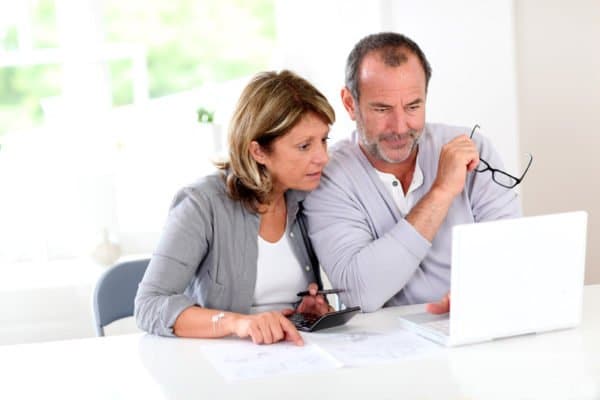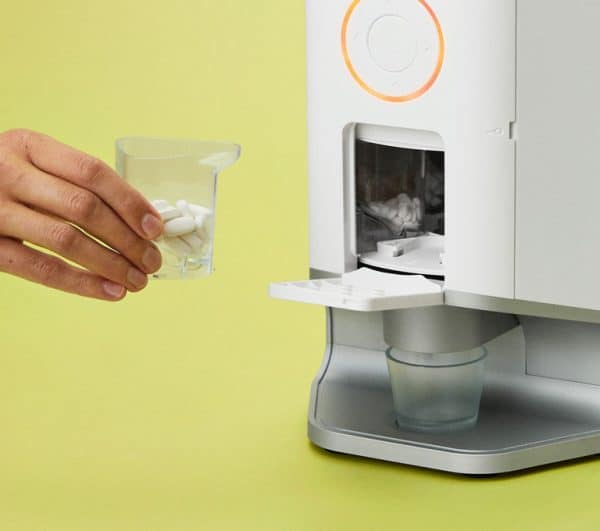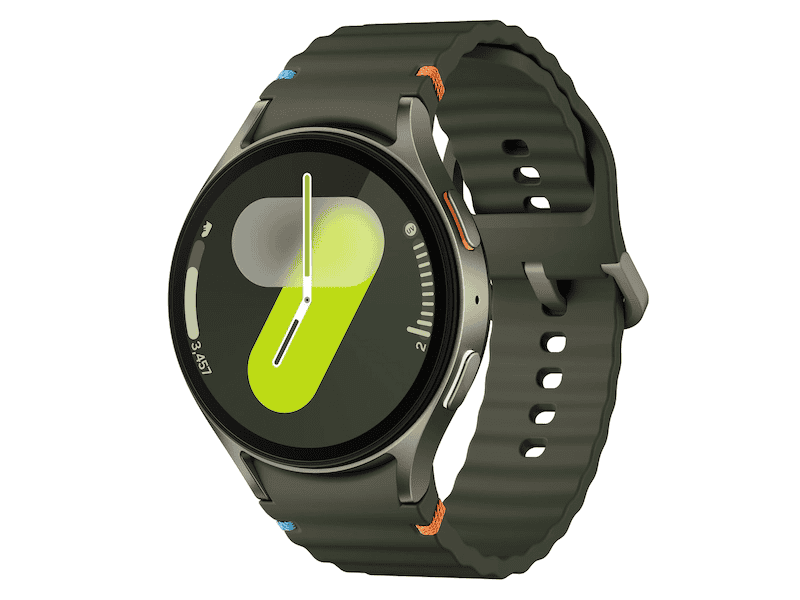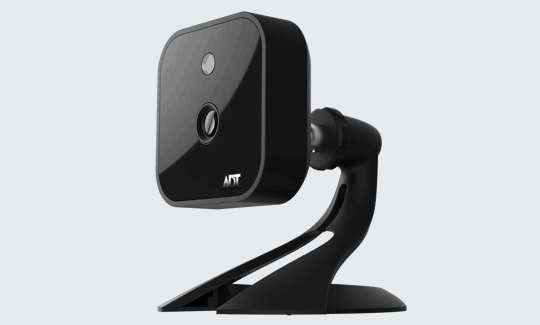Step-by-Step Guide to Smart Home Emergency Plans

Whether you’re a senior yourself or taking care of one, staying safe is a primary goal, especially during emergencies. Smart home technology gives us new tools to help seniors live more safely and independently, with systems that can detect issues early and respond quickly.
According to the Centers for Disease Control, nearly one in four U.S. adults aged 65 and older falls each year. Unfortunately, in 2021, nearly 39,000 older adults died due to falls.1 That makes proactive planning with smart technology not just helpful but essential. In this guide, we’ll walk you through building a personalized emergency plan that combines practical preparation with today’s technology, so you or your loved one can age in place with confidence and support.
Identifying Emergency Risks for Seniors
These are the most common emergency scenarios and the biggest risks seniors face when aging in place.
Common Emergency Scenarios
Emergencies for older adults can range from falls and health events to power outages or tech malfunctions. Smart devices can help, but they aren’t foolproof. A fall detection device may not catch every incident, as we’ve learned in our ample experience testing medical alert systems. Or a smart lock could fail in a power outage if it’s hardwired to your electrical system. Planning for these possibilities is critical. We also need to think about:
- Loss of Wi-Fi or power affecting smart home security systems
- Health crises, like strokes, where voice-activated medical alert systems might not be usable
- Medication devices that miss doses due to battery failure
- Security systems that delay or block emergency access
Every home and individual is different, so the first step is identifying what could go wrong and where smart technology could fit in.
The Biggest Risks

Start by observing your loved one’s routines for a full day. Take note of where technology currently helps them and where gaps exist. Ask yourself:
- Do they have mobility challenges? Consider automated lighting or door sensors.
- Do they take multiple medications? Look into smart pill dispensers with alerts.
- Are they living with cognitive decline? Keep interfaces simple and avoid complicated systems.
- Is the Wi-Fi spotty or unreliable? Plan for device redundancy or alternatives.
Walk through the home and flag any concerns, such as:
- Areas where sensors or detectors are missing
- Devices that only work online or need charging
- Backup plans for common failures
Tip: Print out a checklist of devices and test results to keep everyone on the same page.
Ways to Communicate
A good emergency plan includes several ways for you or your loved one to get help.
Primary Communication
Smart speakers, emergency buttons, watches, and phone apps are all useful tools, but they need to be simple and reliable. Your main options might include:
- Voice commands to call for help.
- Smartwatches that detect falls or irregular heartbeats. Check out our list of the best blood pressure smartwatches for more info.
- App-based alerts that notify family instantly if someone falls.
- One-touch emergency buttons placed in high-risk areas, like wall-mounted buttons in the bathroom

Backup Communication
But what happens if the Wi-Fi goes out or the speaker isn’t working? That’s why you need backups:
- A landline with pre-programmed emergency contacts
- A medical alert pendant with its own cellular signal
- Trusted neighbors who can check in quickly
- 24/7 professional monitoring services
Each communication method should be tested regularly, and everyone in the caregiving circle should understand how alerts are triggered and escalated.
Device Integration and Redundancy
Smart homes work best when devices talk to each other. A fall alert, for instance, should trigger an emergency call, turn on the lights, and unlock the door for responders. To make this happen, you need a hub or system that can coordinate responses across multiple devices. Examples of integrated actions include:
- Panic buttons that also send alerts and flash hallway lights
- Smart locks that unlock automatically for paramedics
- Thermostats that adjust for comfort if someone is stuck in one place for a while
- Systems that notify family if a medication hasn’t been taken
For each system, ask, what’s the backup? If the primary device fails, is there another layer of protection?
Medical Emergency Tools
According to a 2020 poll from the University of Michigan, 26 percent of U.S. adults aged 50 to 80 reported visiting the emergency department in the past two years.2 If the senior in your life is having a medical emergency, you can make sure they get help as quickly as possible.
Health Monitoring Devices
Today’s smartwatches and health monitors can alert family and first responders if something seems off. We’ve personally tested out, for example:
- Smartwatches that track heart rate and detect falls, like Apple Watches or medical alert systems with watch options
- Connected scales or blood pressure monitors that sync to apps, like the Wyze Scale, which integrates with Apple Health, that we use every morning
- Glucose meters for those with diabetes
- Air quality monitors that alert for pollutants
Even simple motion sensors can help track routines. If someone doesn’t get out of bed by their usual time, a notification can go out to check on them. These tools work best when connected to an emergency plan. That might mean sending data to a caregiver or sharing medical info with paramedics.
Medication Management
Missed or incorrect medications are a leading cause of preventable emergencies, according to the National Institute of Health. Smart pill dispensers and reminders help, but you may need more than one device. Consider:
- A dispenser that locks until it’s time for the next dose
- Reminders that alert both the senior and caregiver when it’s time to take medication
- A clear, printed list of all medications with dosage and schedule
- Extra meds in a safe, labeled location in case of emergency
If possible, integrate medication data with health monitoring apps so you can review patterns and spot concerns early.3
Tip: Keep an updated medication card in a visible spot, like the fridge, for emergency responders.
Security and Access

Of course, there’s also the senior’s physical security, a concern for anyone, but especially for those seniors living alone. Fortunately, there are many smart home security options with remote apps that allow us to easily check in on the seniors in our lives. We highly recommend products from companies like Ring, SimpliSafe, and ADT.
Smart Locks and Doors
Smart locks add convenience but can also be part of your emergency strategy. For example, you can:
- Assign temporary access codes to EMTs or neighbors
- Set doors to unlock automatically when a panic button is pressed
- Receive alerts when doors are opened unexpectedly
Just make sure there’s always a way if the smart system fails. A backup key lockbox with a trusted code can be a lifesaver. Some medical alert companies offer lockboxes for this purpose.
Visitor Management
Video doorbells, outdoor cameras, and indoor cameras can help monitor who comes and goes. You can:
- Check in remotely through the camera’s two-way audio if you receive an alert
- Allow entry with one tap from your phone
- Track visits from aides or deliveries
Some systems allow for different levels of access for family, neighbors, and responders.
Environmental Safety
Environmental events like fires, gas leaks, and water leaks are also a concern, but like with home security, there are several smart home environmental monitoring tools we love for ourselves and for the older adults in our lives.
Fire and Gas Detectors
Modern smoke and CO detectors can do more than just beep. They can:
- Send alerts to your phone or a caregiver
- Activate lights or alarms in specific rooms
- Notify emergency services automatically
- Trigger ventilation systems or shut off gas lines
Make sure detectors are installed in bedrooms, kitchens, and near utility areas. Test them monthly and check battery life or backup power options. Most of these devices are either battery-pwoered or hardwired into your home, but if they’re hardwired, make sure they include a backup battery in the event of a power outage.
You can find great smoke, fire, and CO detectors from companies like Google Nest and Ring. We recommend getting all of your smart home automation devices from the same company so you can easily track them from one app.
Water Leak Sensors
A burst pipe or leaking appliance can be a major hazard, especially for seniors with mobility challenges. Smart water sensors placed near sinks, toilets, and water heaters can:
- Alert you to leaks early
- Trigger automatic shutoff valves
- Send a text or email to family
Some even pair with sump pump monitors or humidity detectors to catch hidden moisture issues before they turn into bigger problems.
Staying Connected in an Emergency
If an emergency happens, have systems in place so you or your aging loved one doesn’t have to handle things on their own.
Family Alerts
A good emergency plan includes how to notify family quickly. Many smart systems let you:
- Set up contact chains so alerts go to multiple people. We love using the Lively Link app, for example, with our Lively Mobile2 medical alert systems, as it allows us to communicate with multiple caregivers automatically whenever the device detects a fall.
- Customize messages with specific details (e.g., “Mom hasn’t taken her 8 a.m. meds”)
- Allow remote access to cameras, microphones, or intercoms
Apps tied to health or security systems often let you view activity logs or talk directly through a smart speaker or doorbell. Look for cameras with both speakers and microphones, commonly referred to as “two-way audio.” If you prefer, you can also set up a tablet, like an Amazon Echo or a Nest display, in a common area, like a kitchen, allowing for easy video chats.
Professional Monitoring Services
Some emergencies need more than a family text. That’s where third-party monitoring comes in. These services are often available with smart home security systems:
- Monitor devices around the clock
- Confirm emergencies before dispatching help
- Call family or backup contacts based on your settings
- Provide documentation of incidents for medical or insurance use
Most services charge a monthly fee, but the peace of mind can be worth it, especially if you live far away or can’t always be available for the older adult in your life.
Maintenance and Testing
Once you purchase smart home automation products, remember to test your systems regularly to ensure they’re working properly. Fortunately, some of this can be automated, as well.
Regular System Checks
Smart homes aren’t set-it-and-forget-it. Test systems monthly (or set up tests to occur automatically), review logs, and make sure devices are charged and connected. Ask questions like:
- Did the last fall alert go through?
- Has anyone checked the battery backup this month?
- Are the smart plugs or sensors still online?
Keep a binder or shared document with your test results, emergency contacts, and device list.
Updates and Upgrades
As your loved one’s needs change, their technology might need to evolve, too. Schedule a yearly review to assess:
- Whether current devices still meet their needs
- If any new features or upgrades are worth considering
- If any apps or devices are outdated or unsupported
Be cautious about automatic updates that change how devices work, especially for seniors who rely on routine. If you install an update, test the system right away to make sure it’s free of bugs.
Emergency Backups
Tech can fail. That’s why every plan should include low-tech and no-tech backups. That means:
- A flashlight near the bed
- A laminated emergency contact card by the phone
- Manual medical tools, like a basic thermometer or blood pressure cuff
- A battery-powered radio for storm alerts
Tip: Make a “tech-free” emergency kit with essentials, and show your loved one exactly where it is and how to use it.
Final Thoughts
Planning for emergencies can feel overwhelming, but smart home tools make it easier than ever to stay ahead of potential crises. When you use them thoughtfully, these systems don’t just add convenience—they help protect the people we care about most.
Start small, focus on what matters most, and build from there. With the right mix of tech, planning, and family support, you or your loved one can stay safe, comfortable, and independent at home.
